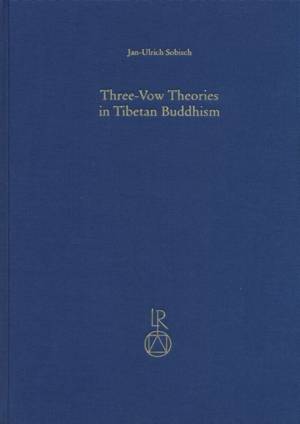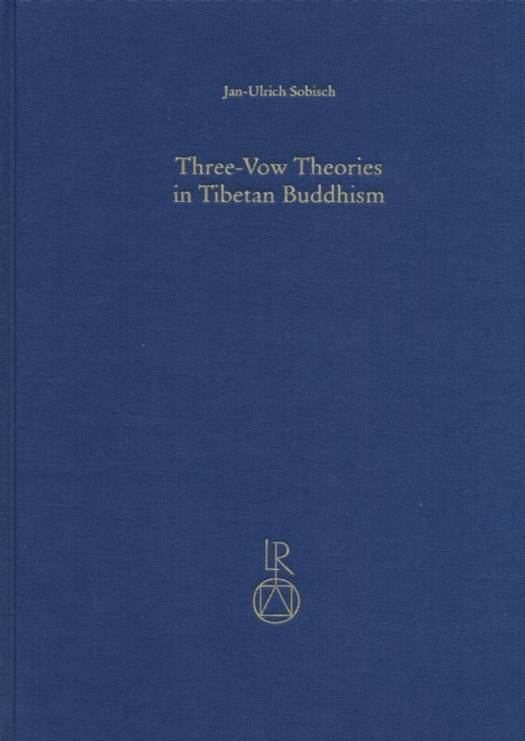
- Retrait gratuit dans votre magasin Club
- 7.000.000 titres dans notre catalogue
- Payer en toute sécurité
- Toujours un magasin près de chez vous
- Retrait gratuit dans votre magasin Club
- 7.000.0000 titres dans notre catalogue
- Payer en toute sécurité
- Toujours un magasin près de chez vous
Three-Vow Theories in Tibetan Buddhism
A Comparative Study of Major Traditions from the Twelfth Through Nineteenth Centuries
Jan-Ulrich Sobisch
140,45 €
+ 280 points
Description
"Three Vow Theories in Tibetan Buddhism" is the first comparative study of the interrelations of the three Buddhist systems of vows as explained by some of the greatest scholars and adepts of Tibet. Although conventional monastic Buddhism insists on a strict avoidance of evil deeds, the Mahayana, which stresses as foremost the welfare of others, allows the occasional ignoring of moral rules if altruistically motivated, whereas the Vajrayana goes so far as to teach that the yogi is sometimes obliged to transgress a moral code.
The attempts in Tibet since the twelfth century to harmonize the different vows of Pratimoksa, Mahayana, an Vajrayana led to lively controversies and ingenious exegetic strategies. One strategy was to postulate the superiority of Vajrayana either trough an automatic "upward transformation" of the "lower vows" or a complete "outshining" of conventional moral codes. Many masters stressed that particular practices of the Vajrayana, such as sexual yoga, were exceptions that only a few excedingly accomplished yogis could carry out.
To clarify the historical background, brief biographies of the main authors on this theme are presented, including for the Indian pandita Vibhuticandra, the Tibetan masters Gorampa (Sakya), Gampopa (Kayu), Karma Thrinlay and Karma Ngedön (Karma Kabrgyu), Kongtrül (Rime), Jigten Gönpo and Dorje Sherab (Drigung Kargyu), and Ngari Panchen and Lochen Dharmashri (Nyingma).
The present book is the doctoral dissertation (U. Hamburg, 1999) of Dr. Jan-Ulrich Sobisch, whose investigation at the University of Munich of the 16th-century Sakya master Ameshab is now nearing completion.
The attempts in Tibet since the twelfth century to harmonize the different vows of Pratimoksa, Mahayana, an Vajrayana led to lively controversies and ingenious exegetic strategies. One strategy was to postulate the superiority of Vajrayana either trough an automatic "upward transformation" of the "lower vows" or a complete "outshining" of conventional moral codes. Many masters stressed that particular practices of the Vajrayana, such as sexual yoga, were exceptions that only a few excedingly accomplished yogis could carry out.
To clarify the historical background, brief biographies of the main authors on this theme are presented, including for the Indian pandita Vibhuticandra, the Tibetan masters Gorampa (Sakya), Gampopa (Kayu), Karma Thrinlay and Karma Ngedön (Karma Kabrgyu), Kongtrül (Rime), Jigten Gönpo and Dorje Sherab (Drigung Kargyu), and Ngari Panchen and Lochen Dharmashri (Nyingma).
The present book is the doctoral dissertation (U. Hamburg, 1999) of Dr. Jan-Ulrich Sobisch, whose investigation at the University of Munich of the 16th-century Sakya master Ameshab is now nearing completion.
Spécifications
Parties prenantes
- Auteur(s) :
- Editeur:
Contenu
- Nombre de pages :
- 596
- Langue:
- Anglais
- Collection :
- Tome:
- n° 1
Caractéristiques
- EAN:
- 9783895002632
- Date de parution :
- 01-07-02
- Format:
- Livre relié
- Format numérique:
- Genaaid
- Dimensions :
- 240
- Poids :
- 1133 g

Les avis
Nous publions uniquement les avis qui respectent les conditions requises. Consultez nos conditions pour les avis.






